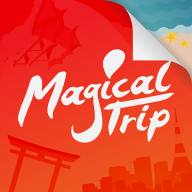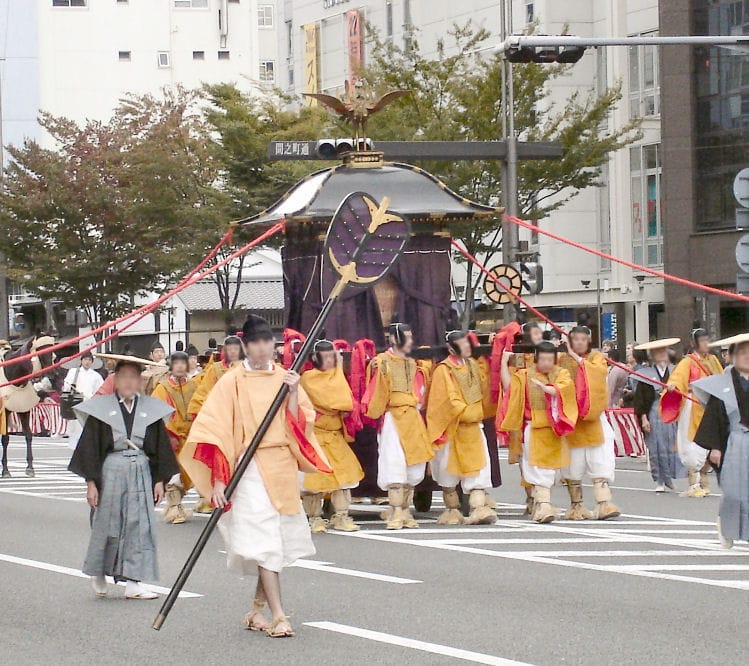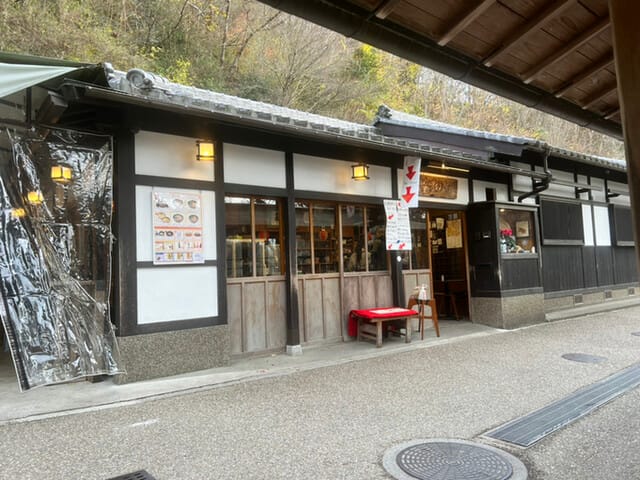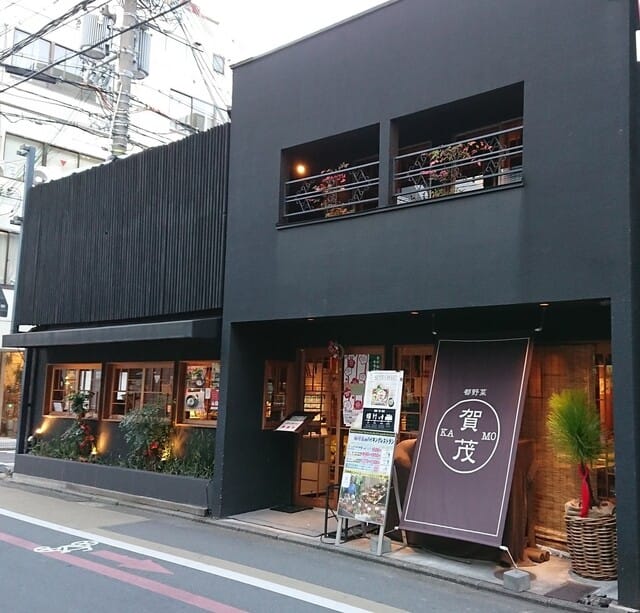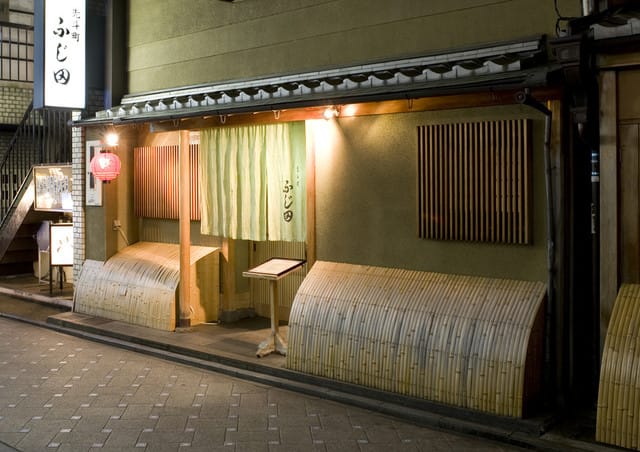The four seasons in Kyoto hold special memories for me, having lived there.
In spring, cherry blossoms paint the city a pale pink, with the Philosopher's Path and Maruyama Park bustling with flower-viewing visitors. At night, the illuminated cherry blossoms create a fantastical atmosphere different from daytime.
As summer arrives, the excitement of the Gion Festival envelops Kyoto. The procession of magnificent floats is breathtaking, and I visited many times. In August, there's the Gozan no Okuribi, and watching the fires light up on Mount Daimonji from near my university was a regular enjoyment.
During the autumn foliage season, famous spots like Tofukuji Temple and Kiyomizu-dera turn deep red. The scenery, especially in the morning and evening, is breathtakingly beautiful, and I, living in Kyoto, visited frequently.
Winter in Kyoto is quiet, but the snow-covered landscape of Kinkaku-ji is worth seeing. Snow can accumulate in the northern and eastern mountain areas, transforming the ancient capital into a silvery world.
And with the changing seasons, Kyo ryouri (Kyoto cuisine) also changes. You can enjoy delicate flavors using seasonal ingredients, like bamboo shoots in spring and yudofu in winter.
Kyoto is a city where you can experience the essence of Japanese culture throughout the year. I want people from all over the world to know the charms of Kyoto that I discovered while living there.
I hope you'll read this guide and experience the wonders of each season in Kyoto for yourself!

If you are looking for Comprehensive Kyoto Guide, check the article below! I summarized how and where you can enjoy different areas of Kyoto as much as possible.
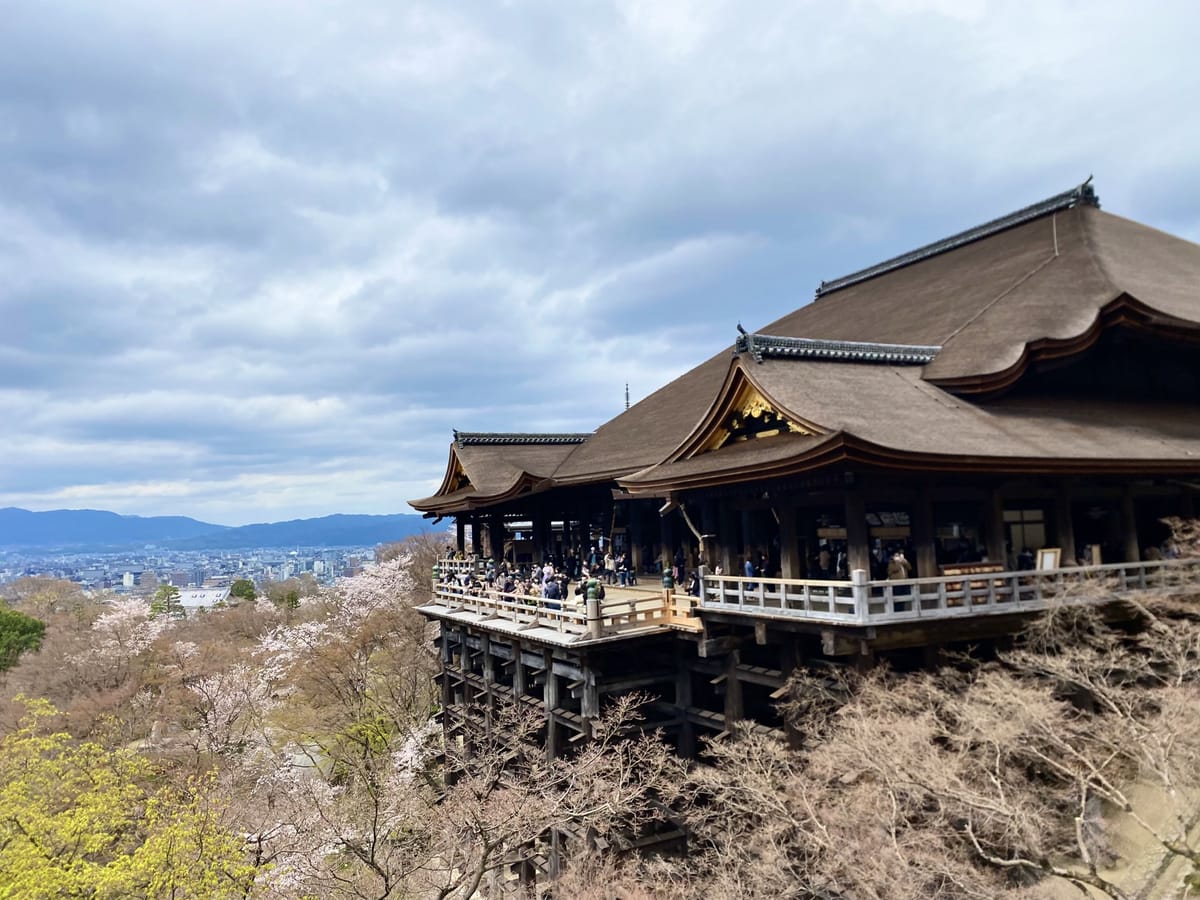
Table of Contents
・What Season Should You Visit Kyoto?
・Most Recommended Season: Autumn Foliage and Fall Festivals in Kyoto
・Cherry Blossoms Coloring Kyoto's Spring
・Enjoying Kyoto's Summer with Festivals and Fresh Greenery
・Snow Scenes Coloring Kyoto's Winter
What Season Should You Visit Kyoto?
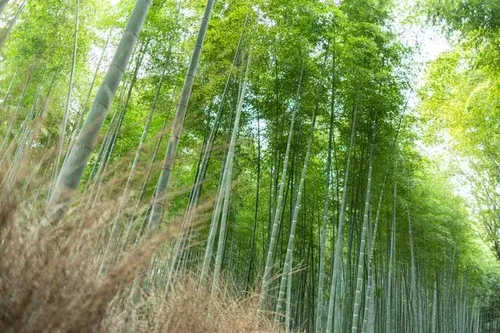
Kyoto is an attractive city that shows various expressions throughout the year, but autumn with its fall foliage and spring with its cherry blossoms are particularly popular seasons.
Summer sees many traditional events like the Gion Festival, offering a great opportunity to experience Kyoto's culture firsthand. On the other hand, winter has fewer attractions and can be quite cold, so there are fewer tourists, but you can enjoy Kyoto more quietly.
However, I'm confident that Kyoto is a wonderful city that makes you feel the depth of history and culture no matter which season you visit.
Most Recommended Season: Autumn Foliage and Fall Festivals in Kyoto
If I had to strongly recommend a season for a Kyoto trip, it would definitely be autumn. The charm of Kyoto in autumn is, above all, the beautiful fall foliage.
The scenery of vibrant autumn leaves coloring temples and shrines is a wonderful experience that can only be had in Kyoto. Here, I'll introduce some representative autumn foliage spots in Kyoto.
Peak Season for Autumn Foliage in Kyoto
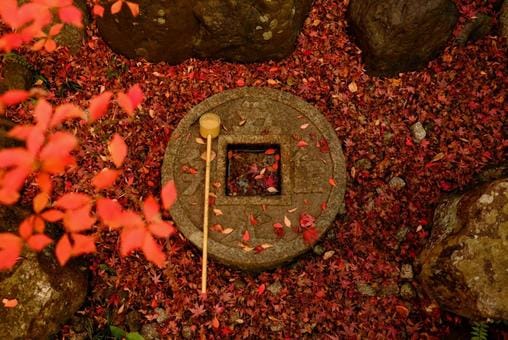
The peak season for autumn foliage in Kyoto is typically from mid to late November. However, the exact timing can vary depending on conditions like temperature and sunlight hours that year.
Also, some areas color early while others can be enjoyed later, so you can enjoy autumn leaf viewing in Kyoto for a relatively long period, which is part of its charm.
Famous Spots for Autumn Foliage
Kyoto has many famous spots for autumn foliage, but here I'll introduce three recommended spots.
Tenryu-ji Temple
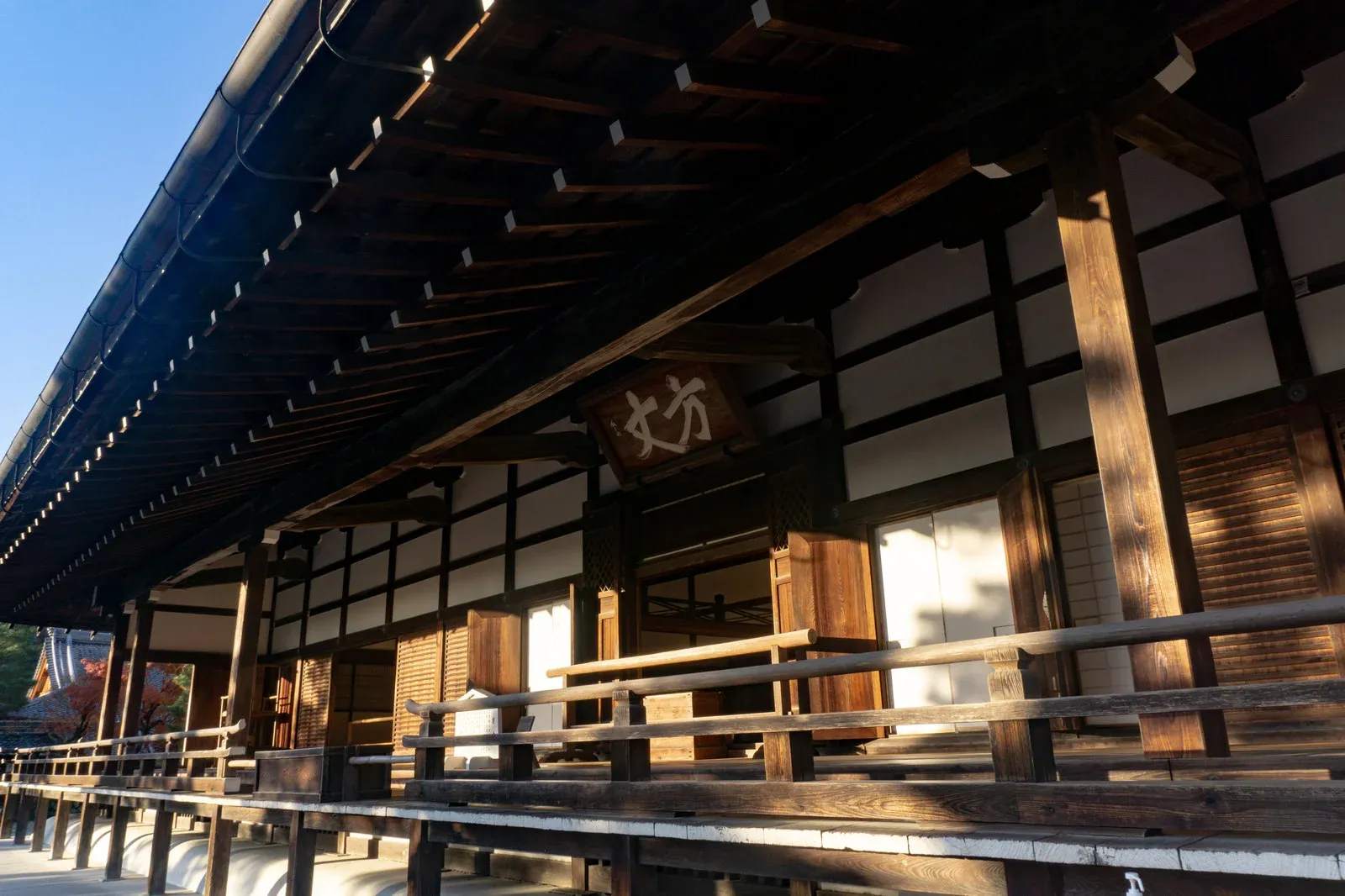
Tenryu-ji Temple is a representative autumn foliage spot in Arashiyama. The autumn leaves in the Sogenchi Garden are especially spectacular, with gradations of red and yellow reflecting in the pond, creating a breathtaking view.
It was one of my favorite spots that I visited every year when I lived in Kyoto. The autumn foliage at Tenryu-ji Temple is typically at its best from mid to late November. It's a place I highly recommend visiting when touring Arashiyama.
Access
・From Kyoto Station, take the JR San'in Main Line to "Saga-Arashiyama Station"
・From the Gion area or Osaka, take the Hankyu Railway to "Arashiyama Station"
・Though less frequently used, it's also accessible from Keifuku Electric Railroad "Arashiyama Station"
Website: https://www.tenryuji.com/en/
Tofuku-ji Temple
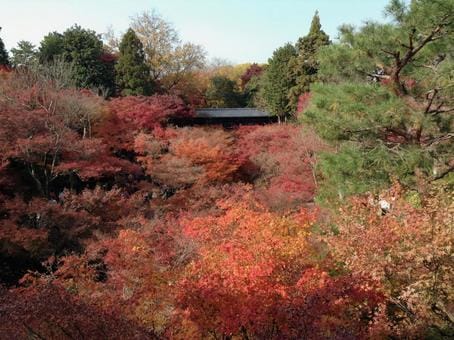
Tofuku-ji Temple in the Higashiyama area is another must-see spot for autumn foliage. Tofuku-ji is widely known as one of Kyoto's best spots for autumn leaves, and the view of the Tsutenkyo Bridge spanning over the vivid autumn leaves that fill the temple grounds is breathtaking.
In recent years, it gets extremely crowded during the autumn foliage season, but it's still worth seeing. The best time to see the autumn leaves at Tofuku-ji is typically from mid-November to early December, which is relatively late. If you want to fully enjoy Kyoto's autumn leaves, make sure to visit here.
Access
・10-minute walk from JR Nara Line "Tofukuji Station"
Website: https://tofukuji.jp/
Kiyomizu-dera Temple
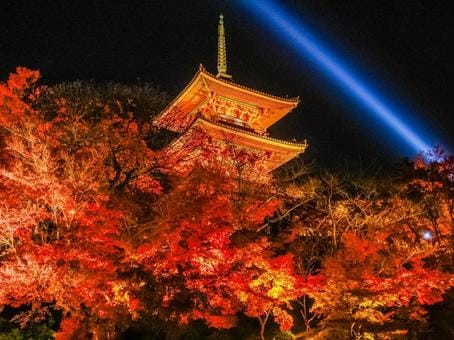
Kiyomizu-dera is a popular tourist spot representing Kyoto, but it's also known as a famous spot for autumn foliage. The view of autumn leaves from Kiyomizu-dera, built on a hillside, can be said to symbolize autumn in Kyoto.
At night, there's also an illumination event, allowing you to enjoy a different, fantastical atmosphere from daytime. Kiyomizu-dera is a particularly popular spot, so be prepared for crowds, but it's one of the places you should visit.
The best time to see autumn leaves at Kiyomizu-dera is typically from late November to early December, which is slightly late. If you want to enjoy Kyoto's classic tourist spots along with autumn leaves, make sure to visit here.
Access
・About a 25-minute walk along the approach road from Keihan Electric Railway "Gion-Shijo Station" or Hankyu Railway "Kyoto-Kawaramachi Station"
Website: https://www.kiyomizudera.or.jp/en/
Autumn Festivals and Events
Kyoto's autumn is not only about beautiful autumn leaves but also traditional autumn festivals. Among them, the most famous is the Jidai Matsuri held on October 22nd.
Jidai Matsuri
Source: Wikipedia
The Jidai Matsuri is one of Kyoto's three major festivals with a long history. A procession of about 2,000 people dressed in historical costumes from the Heian period to the Meiji era parades through the streets of Kyoto. The sight is as if you've traveled back in time, with breathtaking beauty.
The procession stretches about 2 kilometers, and anyone who sees this colorful and impressive parade will surely feel the depth of Kyoto's history. I visited several times during my student days, and each time I couldn't help but feel the romance of Kyoto's history.
Access
About a 10-minute walk from Higashiyama Station on the Subway Tozai Line. It takes place about a 25-minute walk from the Gion-Shijo or Kawaramachi areas.
Website: https://www.heianjingu.or.jp/festival/jidaisai.html
Autumn Leaves Illumination
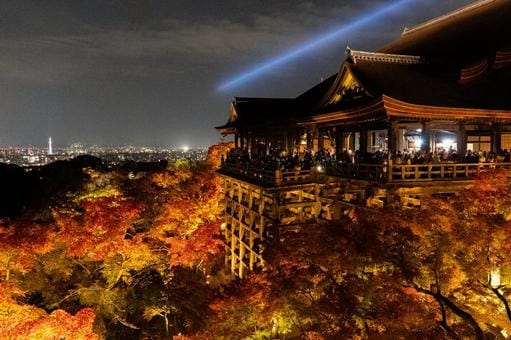
In Kyoto, many temples and shrines, including Kiyomizu-dera and Kodai-ji, hold nighttime autumn leaves illumination events. These popular events allow you to view the autumn leaves in a fantastical atmosphere different from daytime, and they're well-received even among Kyoto locals.
In particular, the collaboration of illuminated autumn leaves and the atmospheric night view of the ancient capital is a wonderful experience unique to Kyoto. The contrast between the solemn appearance of World Heritage-registered temples and shrines and the illuminated autumn leaves gives a different kind of emotion from daytime.
When visiting Kyoto, be sure to experience the nighttime autumn leaves illumination as well.
Autumn Gourmet in Kyoto
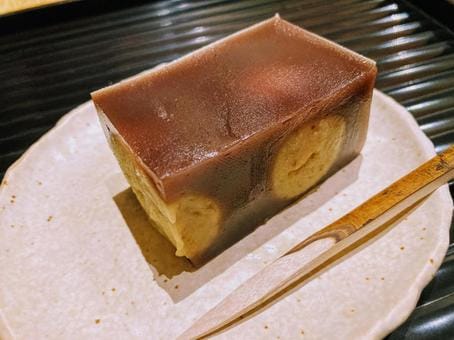
When it comes to autumn flavors in Kyoto, sweets using Tanba chestnuts are especially famous. Tanba chestnuts are a high-grade ingredient representing Kyoto's autumn flavors, characterized by their golden, glossy appearance and moist sweetness.
Many stores, including the long-established Japanese confectionery shop "Tawara Yoshitomi" in Kyoto, sell products using Tanba chestnuts, and you can enjoy various sweets like chestnut kinton and chestnut manju.
It's perfect as a souvenir from your autumn Kyoto trip, so I recommend buying some for yourself and as gifts. Please take this opportunity to taste these exquisite sweets that evoke autumn in both taste and appearance.
Website: https://kyogashi.co.jp/
Also, dishes using yudofu (hot tofu) are a staple of Kyoto's gourmet scene from autumn to winter. Yudofu is a simple dish where tofu made with rich soy milk is enjoyed in a light-flavored broth.
Characterized by its smooth texture and gentle flavor, it has the effect of warming you up from the core of your body.
I think the warmth that spreads to the core of your body is a feature of Kyoto's autumn and winter.
Recommended Restaurant for Yudofu: Takinoya
Source: Tabelog by array911
This restaurant is located within the grounds of Kiyomizu-dera Temple, where you can enjoy yudofu, udon, soba, and other menu items without reservation.
The reasonable prices are also attractive, with meals costing about 1,000 to 1,500 yen per person, so I recommend it. I think it's a perfect place to visit while sightseeing at Kiyomizu-dera.
<Store Information>
Address: Beside Otowa Waterfall, Kiyomizu-dera Temple Grounds, 1 Chome-302 Kiyomizu, Higashiyama Ward, Kyoto, 605-0862
Closed: Thursdays
Phone: 075-561-5117
Hours: 10 AM–4 PM
Website: https://tabelog.com/en/kyoto/A2601/A260301/26002922/
Important Points for Enjoying Autumn in Kyoto
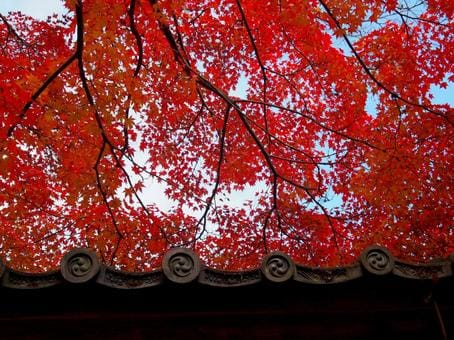
One thing to keep in mind when enjoying an autumn trip to Kyoto is choosing the right clothing. Autumn in Kyoto is characterized by large temperature differences between day and night. It can be sweaty hot during the day but chilly in the evening and later. Therefore, it's essential to have clothes that can adapt to these temperature differences, such as bringing something to layer.
Also, since most of Kyoto's autumn foliage spots are typically explored on foot, choosing comfortable shoes is important.
Especially for temples and shrines along the mountains like Kiyomizu-dera, you'll be walking up stairs and mountain paths, so it's safer to avoid high-heeled shoes. Enjoy Kyoto's autumn to your heart's content with comfortable shoes suitable for walking around the city.
If you are interested in Kyoto in autumn, check the article below! I summarized how and where you can enjoy Kyoto in autumn as much as possible.
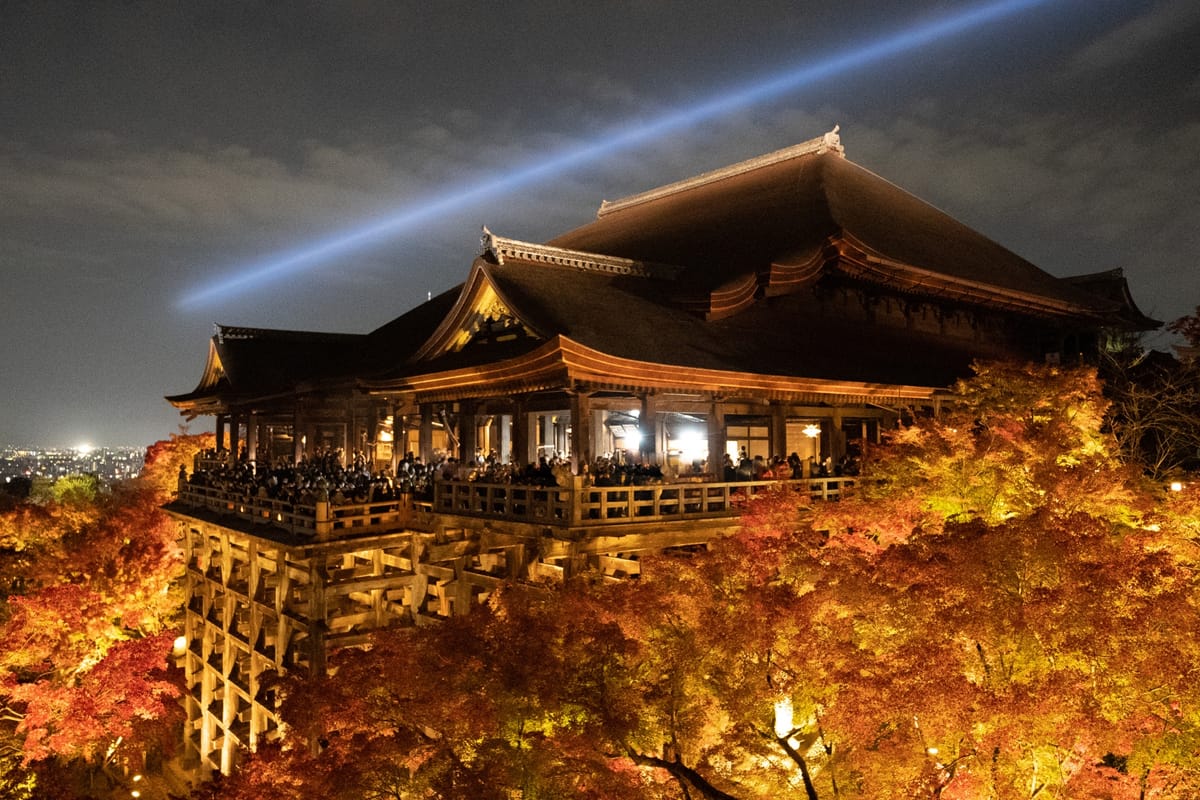
Cherry Blossoms Coloring Kyoto's Spring
Spring is all about the cherry blossom season. Kyoto is famous nationwide as a cherry blossom viewing spot, with unique cherry blossom scenery to enjoy in each location. Here, I'll introduce Kyoto's representative cherry blossom spots and share ways to enjoy Kyoto in spring, drawing from my own experiences.
Peak Season for Cherry Blossoms in Kyoto
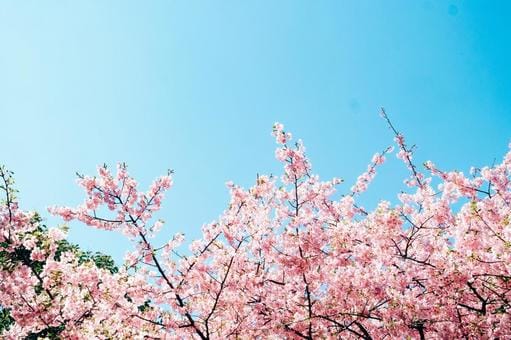
The peak season for cherry blossoms in Kyoto varies depending on the climate that year, but it's typically from late March to mid-April. However, the best viewing times differ by location, so it's a good idea to check the bloom information for your intended tourist spots in advance.
Also, because Kyoto has many cherry blossom spots, popular locations can get extremely crowded every year. If you want to enjoy the cherry blossoms more leisurely, I recommend aiming for early morning or evening hours.
Famous Cherry Blossom Spots in Kyoto
Here, I'll introduce three spots that are relatively easy to access among Kyoto's famous cherry blossom locations.
Maruyama Park
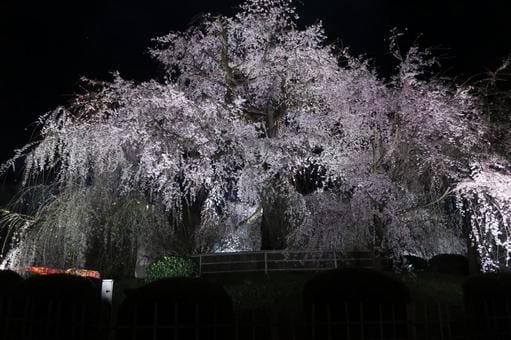
Maruyama Park in the Gion area is known as one of Kyoto's best spots for cherry blossoms. The park has about 600 cherry trees planted, many of which are weeping cherry trees, so you can feel as if you're walking through a tunnel of cherry blossoms.
At night, there's also illumination, allowing you to enjoy nighttime cherry blossom viewing in a fantastical atmosphere. However, because it's such a famous spot, be prepared for heavy crowds even on weekdays.
I recommend visiting during early morning or evening hours.
Access
・About a 5-10 minute walk from Keihan Electric Railway "Gion-Shijo Station". Or about a 10-15 minute walk from Hankyu Railway "Kawaramachi Station"
Website: https://kyoto-maruyama-park.jp/
Kamogawa River
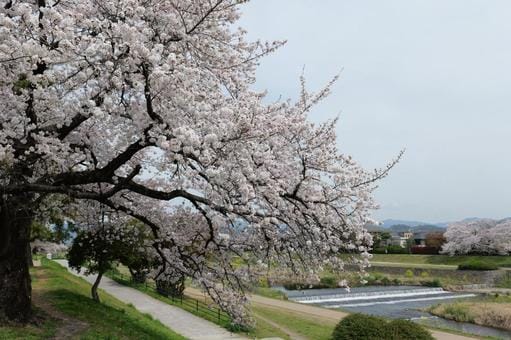
The cherry blossom trees lining the Kamogawa River, which flows through central Kyoto, are also an essential part of Kyoto's spring scenery. If you walk along the Kamogawa River from Keihan Electric Railway's Gion-Shijo Station or Hankyu Railway's Kawaramachi Station, you can enjoy a beautiful tunnel of cherry blossoms.
My recommendation is to extend your walk to the area around Keihan Demachiyanagi Station. That area of the Kamogawa River has relatively fewer people, allowing you to enjoy the cherry blossoms more leisurely.
Access
・Immediately accessible on foot from Keihan Electric Railway "Gion-Shijo Station" or Hankyu Railway "Kawaramachi Station". Also accessible on foot from Keihan Electric Railway "Demachiyanagi Station".
Keage Incline
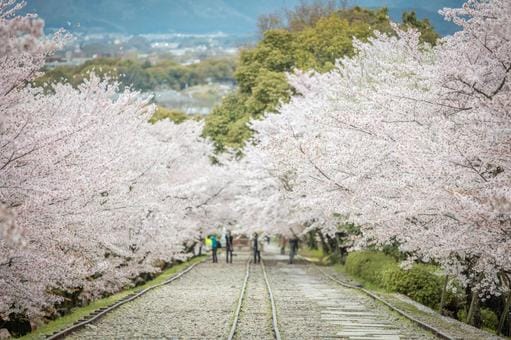
Keage Incline, once used for transporting goods for the Lake Biwa Canal, is now a popular cherry blossom viewing spot.
About 500 cherry trees are planted along the incline, and the sight of cherry blossom tunnels continuing on both sides of the tracks is breathtaking. It's particularly crowded with cherry blossom viewers in early April when the cherry blossoms are in full bloom.
The scenery is fantastic not only during the day but also during nighttime illuminations. It's also conveniently located for accessing other tourist spots, so I recommend stopping by during your Kyoto sightseeing.
Access
・Immediately accessible on foot from "Keage Station" on the Subway Tozai Line
Cherry Blossoms and Spring Events in Kyoto
Next, I'll introduce events where you can enjoy Kyoto in spring.
Cherry Blossom Illumination
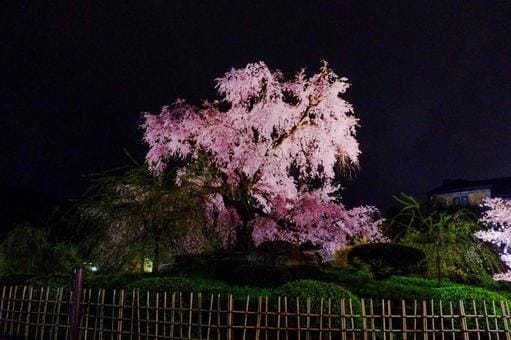
Many of Kyoto's famous cherry blossom spots, including Maruyama Park and Keage Incline that I mentioned earlier, often hold illumination events.
Cherry blossoms lit by lanterns and lighting create a different atmosphere from daytime and are very beautiful. Especially, the sight of cherry blossoms emerging in the dim night path is fantastical and captivating.
Yabusame at Shimogamo Shrine
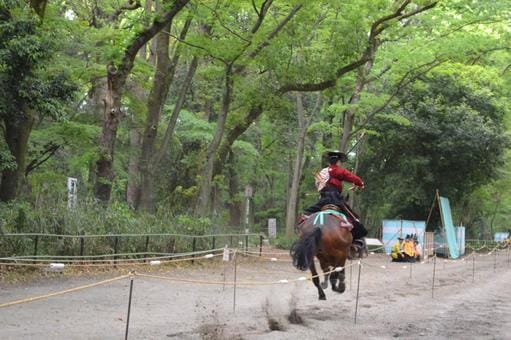
An essential part of Kyoto's spring traditions is the yabusame (horseback archery) held at Shimogamo Shrine. The sight of archers dressed in Heian period costumes shooting arrows at targets while riding galloping horses is breathtaking. This event, held every year on May 3rd, makes you feel the traditional beauty of the ancient capital.
I attended this event during my student days, and it was an experience that made me feel the romance of the Heian nobility. Authentic yabusame is a rare event even in Kyoto. Although it's past the cherry blossom season, why not visit as one of the traditional events coloring Kyoto's spring?
Access
・About a 10-minute walk from Keihan Main Line "Demachiyanagi Station"
Spring Gourmet in Kyoto
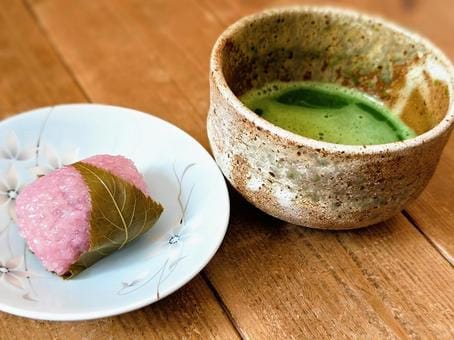
When it comes to spring gourmet in Kyoto, you can't miss the Japanese sweets and dishes that use seasonal ingredients. Among them, sakura mochi, which uses cherry blossom petals and leaves, is a treat that allows you to enjoy a taste unique to spring.
Sakura mochi is highly popular among fresh Japanese sweets and can be purchased at many stores in the city.
The elegant sweetness and faint cherry blossom aroma make you feel the arrival of spring. My favorite is the combination of matcha and cherry blossom. I hope you'll take this opportunity to taste these exquisite Japanese sweets that evoke spring in both taste and appearance.
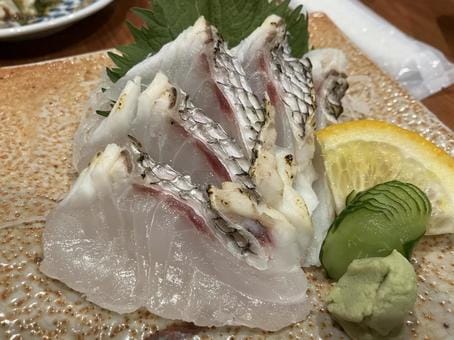
Also, when it comes to Kyoto's spring flavors, you can't miss dishes using seasonal seafood. Among them, sea bream called "sakura dai" is a high-grade fish in season during spring. Sakura dai caught before spawning has firm flesh and is rich in fat, making it delicious whether as sashimi or in sea bream rice porridge.
I also recommend dishes using spring mountain vegetables like bamboo shoots. Please enjoy the refreshing flavors and textures of seasonal ingredients to the fullest.
Important Points for Enjoying Spring in Kyoto
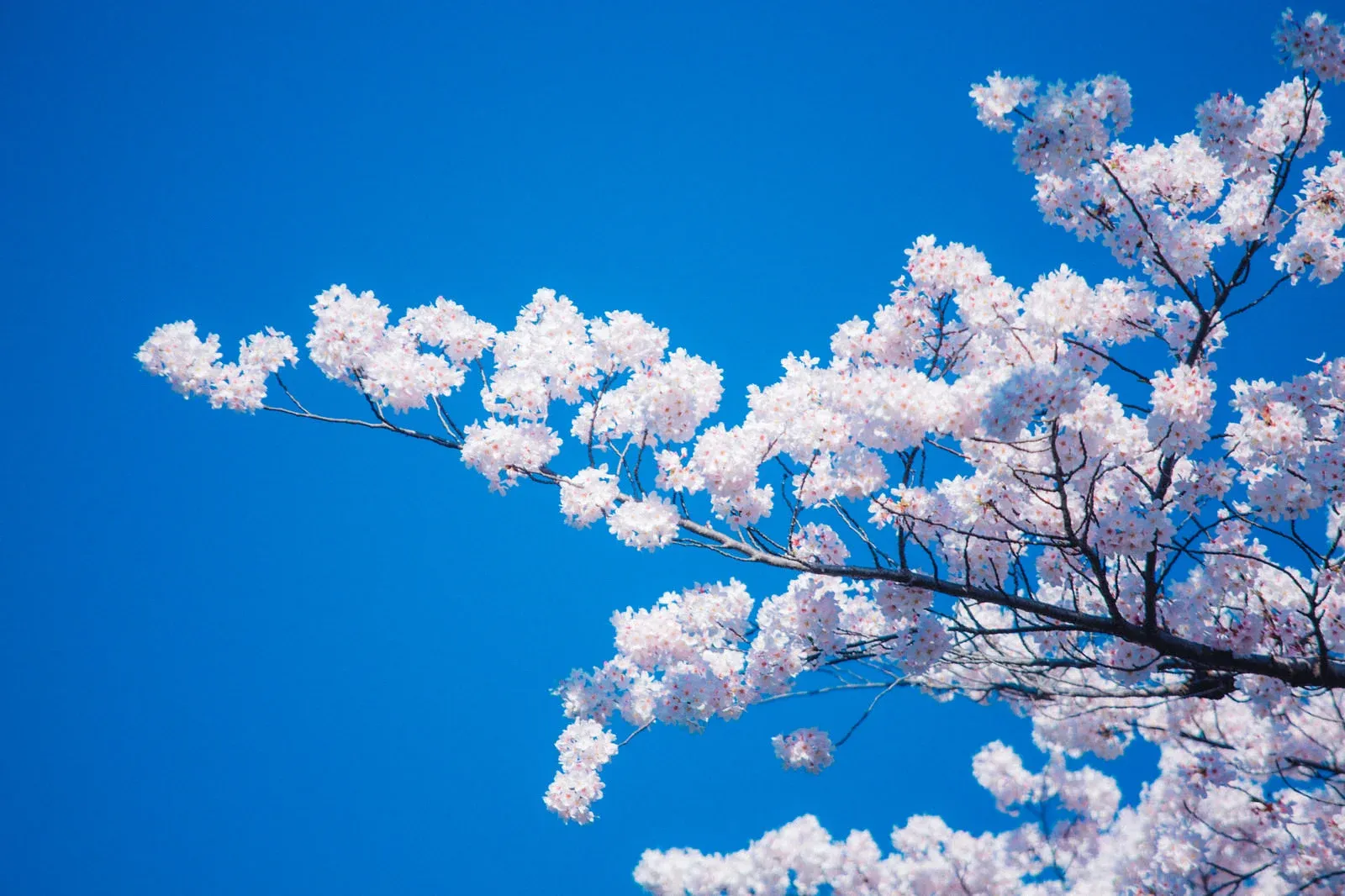
The cherry blossom blooming period in Kyoto can vary greatly depending on the climate that year. Therefore, it's important to thoroughly check the bloom information for your target cherry blossom spots in advance.
Also, Kyoto's cherry blossoms are extremely popular, and heavy crowds are expected at each location during the peak viewing period.
If you want to enjoy the cherry blossoms more leisurely, I recommend aiming for early morning or evening hours.
For clothing, don't forget to bring something to layer as there can be significant temperature differences between day and night. Prepare well to comfortably enjoy Kyoto's spring, and enjoy cherry blossom viewing to your heart's content.
If you are interested in Kyoto in spring, check the article below! I summarized how and where you can enjoy Kyoto in spring as much as possible.
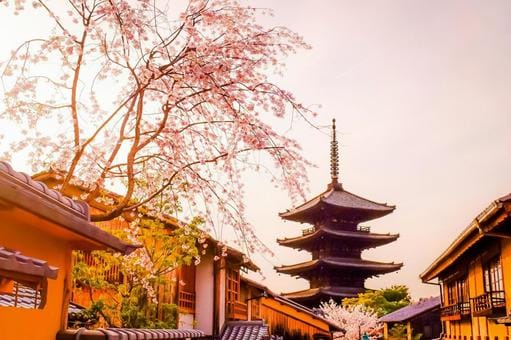
Enjoying Kyoto's Summer with Festivals and Fresh Greenery
Kyoto's summer is full of traditional festivals represented by the Gion Festival, and the whole city is filled with excitement. There are also perfect retreats for relaxing in nature to escape the heat. Let me introduce you to the charms of Kyoto's summer.
Summer Events and Festivals in Kyoto
When it comes to Kyoto's summer, you must see the traditional festivals.
Gion Festival
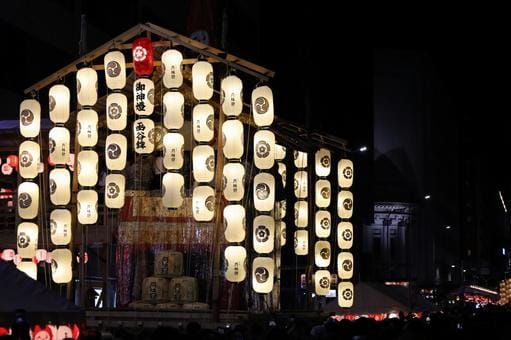
Speaking of the representative summer festival in Kyoto, it's undoubtedly the Gion Festival. This festival, known as the festival of Yasaka Shrine, starts on July 1st every year and ends with the Ekijinja Nagoshi Festival on July 31st.
During this period, it's divided into the early festival (July 14th-17th) and the later festival (July 21st-24th), with various rituals including the Yamahoko Junko procession.
Seeing the magnificently decorated floats up close is truly breathtaking.
The sight of Gion's streets enveloped in heat and excitement is a unique summer scene in Kyoto. The Gion Festival has a history of over a thousand years, originating from prayers to ward off epidemics, and is now registered as a UNESCO Intangible Cultural Heritage, making it a globally valuable festival. I highly recommend visiting at least once.
Gozan no Okuribi
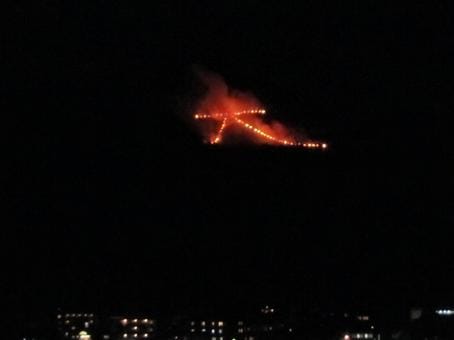
Gozan no Okuribi, held on August 16th, is another event known as a summer tradition in Kyoto. Five characters or shapes - Daimonji, Myoho, Funagata, Hidari Daimonji, and Toriigata - appear on the foothills of five mountains surrounding the Kyoto basin, created by bonfires.
This bonfire event, which has various meanings such as ancestor worship and warding off evil spirits, creates a fantastical scenery in Kyoto's night sky.
The views from along the Kamogawa River in the city center or from the Daimonji mountain observatory are especially spectacular.
However, popular spots get very crowded, so it's best to secure your spot early. Kyoto Tower is known as a hidden spot where you can see all five bonfires, but note that advance reservations are required.
Website: https://www.kyoto-tower.jp/en/
Cool Spots with Fresh Greenery in Kyoto
While the central part of Kyoto is especially hot in summer, there are cool natural spots if you move a little.
Arashiyama
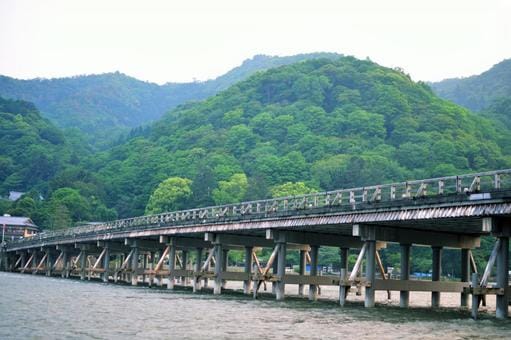
If you want to escape the summer heat and seek coolness, I recommend Arashiyama, which is particularly rich in nature within Kyoto. Arashiyama is known as a representative scenic spot in Kyoto and is also popular as a summer retreat where you can stay relatively cool even in summer.
Among the attractions, I especially recommend walking through the bamboo grove path known as Tenryu-ji Temple grounds. The path lined with lush green bamboo that blocks the scorching sunlight feels like a different world.
The view from Togetsukyo Bridge is also wonderful, and I also recommend feeling the wind while riding the Sagano Scenic Railway. If you're tired from summer sightseeing in Kyoto, why not feel the pleasant breeze in Arashiyama?
Access
・Immediately accessible on foot from JR Sagano Line "Saga-Arashiyama" Station or Hankyu Arashiyama Line "Arashiyama" Station
Website: https://www.sagano-kanko.co.jp/en/
Shimogamo Shrine
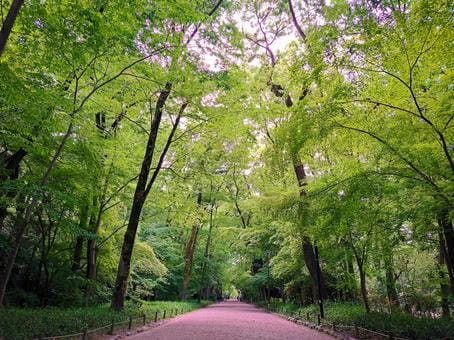
Shimogamo Shrine is one of Kyoto's oldest and most representative shrines, registered as a World Heritage site.
The highlight of this shrine is undoubtedly the "Tadasu no Mori" forest that covers the shrine grounds. In summer, it's the perfect place to enjoy forest bathing, and just walking through the sunlight filtering through the trees feels purifying to the soul.
While many cool spots in Kyoto are inconveniently located to avoid the summer heat, Shimogamo Shrine is close to the city center and easily accessible from the station.
Yet it retains lush nature, which is unique to the ancient capital of Kyoto. If you're tired of Kyoto's summer heat, why not spend a quiet moment at Shimogamo Shrine, feeling the cool breeze?
Access
・About a 10-minute walk from Keihan Electric Railway "Demachiyanagi" Station
Website: https://www.shimogamo-jinja.or.jp/english
Summer Gourmet in Kyoto
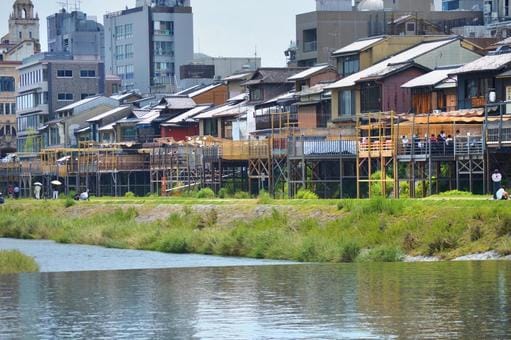
While Kyoto's summer is hot, there are many delicious foods that can blow away the heat. Among them, the "kawayuka" dining experience is an unmissable summer tradition in Kyoto.
At kawayuka, set up at the eaves of restaurants and ryotei (traditional Japanese restaurants), you can enjoy meals while cooling off in the river breeze.
While famous kawayuka spots include ryotei along the Kamo River and in Kibune or Pontocho, the content of kawayuka cuisine varies by establishment. The charm is that you can enjoy everything from high-end Kyo ryouri (Kyoto cuisine) to homestyle obanzai dishes and sushi.
Recommended kawayuka Restaurant: Kappa Sushi Pontocho
Source: Tabelog by Kappa Sushi Pontocho
This is a restaurant I often used during my student days and holds fond memories. This restaurant, operated by the national chain conveyor belt sushi restaurant "Kappa Sushi" but adapted to Kyoto's atmosphere, is attractive for its Pontocho-like ambiance.
Unlike other Kappa Sushi stores, it offers a menu using high-quality ingredients, and the biggest attraction is that you can dine on the terrace along the Kamo River during summer.
I think it's a highly recommended restaurant for those who want to experience a uniquely Kyoto summer dining experience.
<Store Information>
Address: Shiori Building 1F, 160 Matsumotocho, Pontocho, Nakagyo Ward, Kyoto, 604-8013
Closed: None
Phone: 075-746-3061
Hours: 5 PM–11 PM
Hours (Saturdays, Sundays): 12 PM–3 PM, 5 PM–11 PM
Website: https://kappasushi.gorp.jp/
If you are interested in Kawayuka restaurants, check the article below! I summarized Kawayuka restaurants I recommend and how I felt each restaurant.
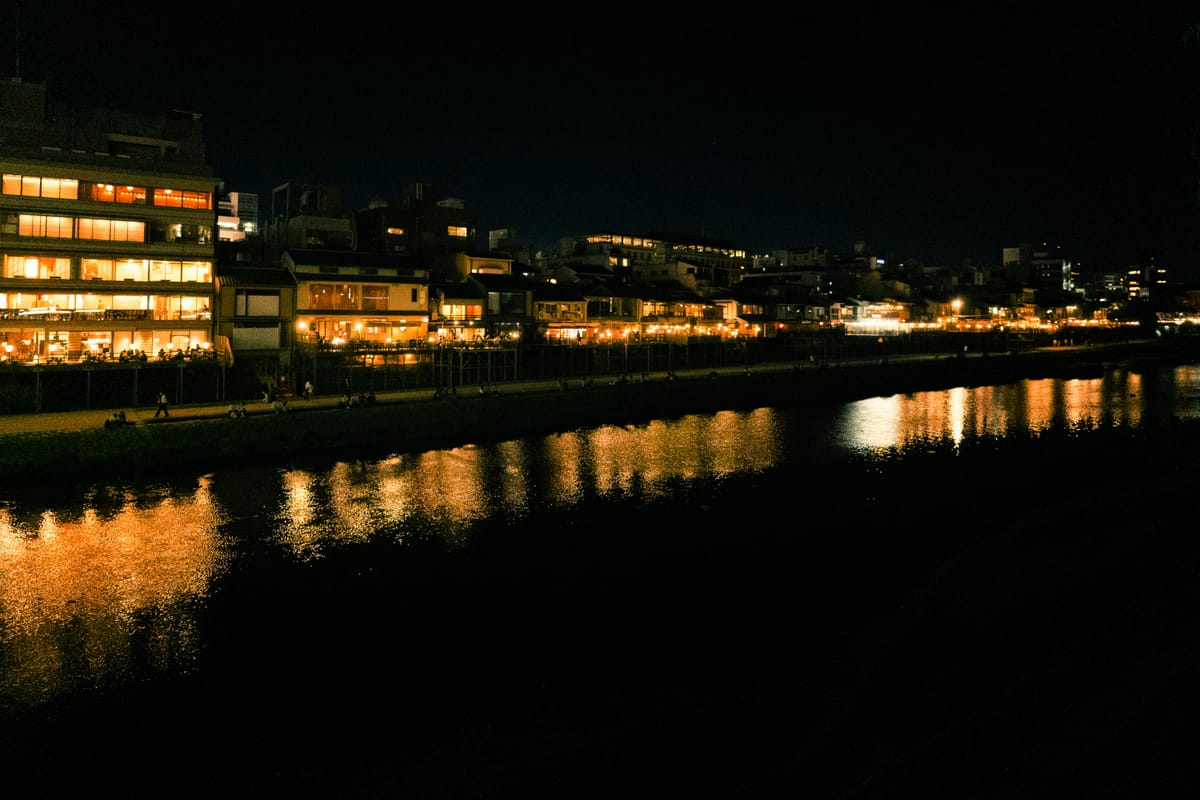
Important Points for Enjoying Summer in Kyoto
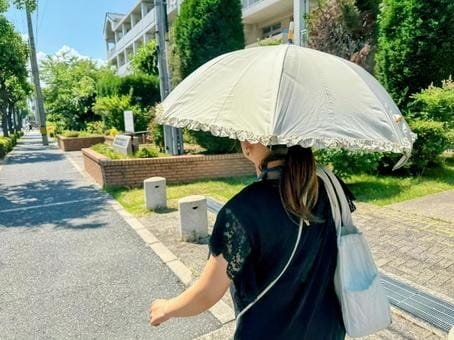
Kyoto's summer is not only hot but also humid, so measures against heat stroke are essential. Especially when sightseeing on foot, be sure to stay hydrated frequently and walk in the shade during times of strong sunlight.
It's also effective to avoid direct sunlight with a hat or parasol. Choosing comfortable shoes and clothes that remain comfortable even when sweating is also an important point.
Since there's a lot of walking involved in Kyoto sightseeing, footwear requires special attention. I recommend shoes with low heels that are easy to walk in. Don't forget to plan a manageable itinerary, as the heat can easily drain your energy. Make sure to take precautions to comfortably enjoy Kyoto's summer and fully immerse yourself in sightseeing.
If you are interested in Kyoto in summer, check the article below! I summarized how and where you can enjoy Kyoto in summer as much as possible.
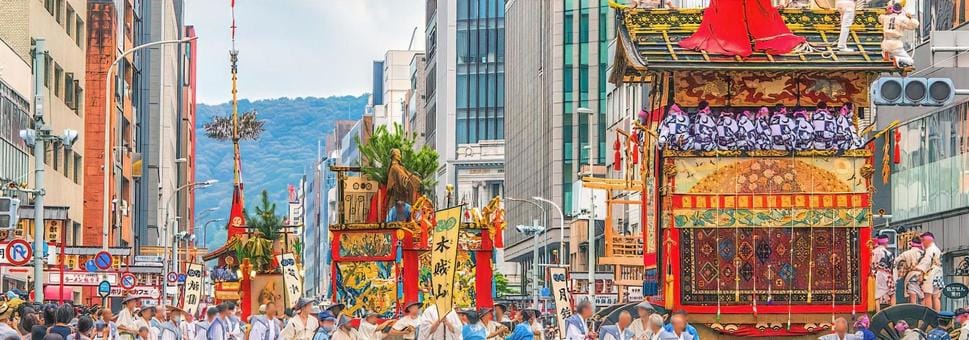
Snow Scenes Coloring Kyoto's Winter
When it comes to enjoying Kyoto in winter, visiting temples and shrines covered in snow is a must. Recently, due to global warming, it's become rare for snow to accumulate in Kyoto, but once it does snow, the charm of the ancient capital is further enhanced.
Here, I'll introduce representative snow viewing spots in Kyoto, along with information on winter-specific events and gourmet experiences.
Famous Spots for Snow Scenes
First, let me introduce spots in Kyoto where you can enjoy snow scenes.
Kinkaku-ji Temple
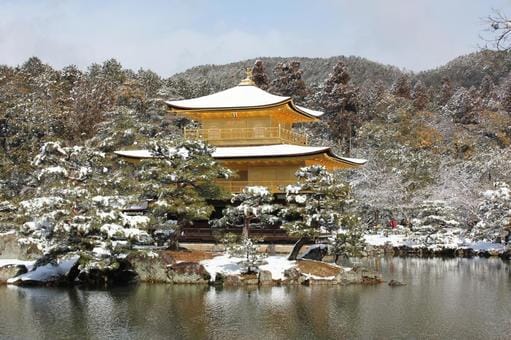
When it comes to winter scenery in Kyoto, the snow-covered Kinkaku-ji Temple is undoubtedly the most iconic. The golden Reliquary Hall, covered in fallen snow, becomes even more beautiful.
The reflection of Kinkaku-ji in the pond is also fantastically beautiful, making you feel as if you've stepped into a painting. The snowy Kinkaku-ji is enveloped in a solemn atmosphere unique to winter, offering a different charm from usual.
Why not leisurely enjoy the winter of the ancient capital while gazing at the beautiful snow scene?
Access
・About a 3-minute walk from "Kinkakuji-michi" bus stop on Kyoto City Bus
・Accessible by taking City Bus No. 205 from bus stops around Kyoto Station, Hankyu Kawaramachi Station, or Gion-Shijo Station
Website: https://www.shokoku-ji.jp/en/kinkakuji/
If you are interested in Kinkaku-ji Temple, check the article below! I summarized in more details and how I felt there.
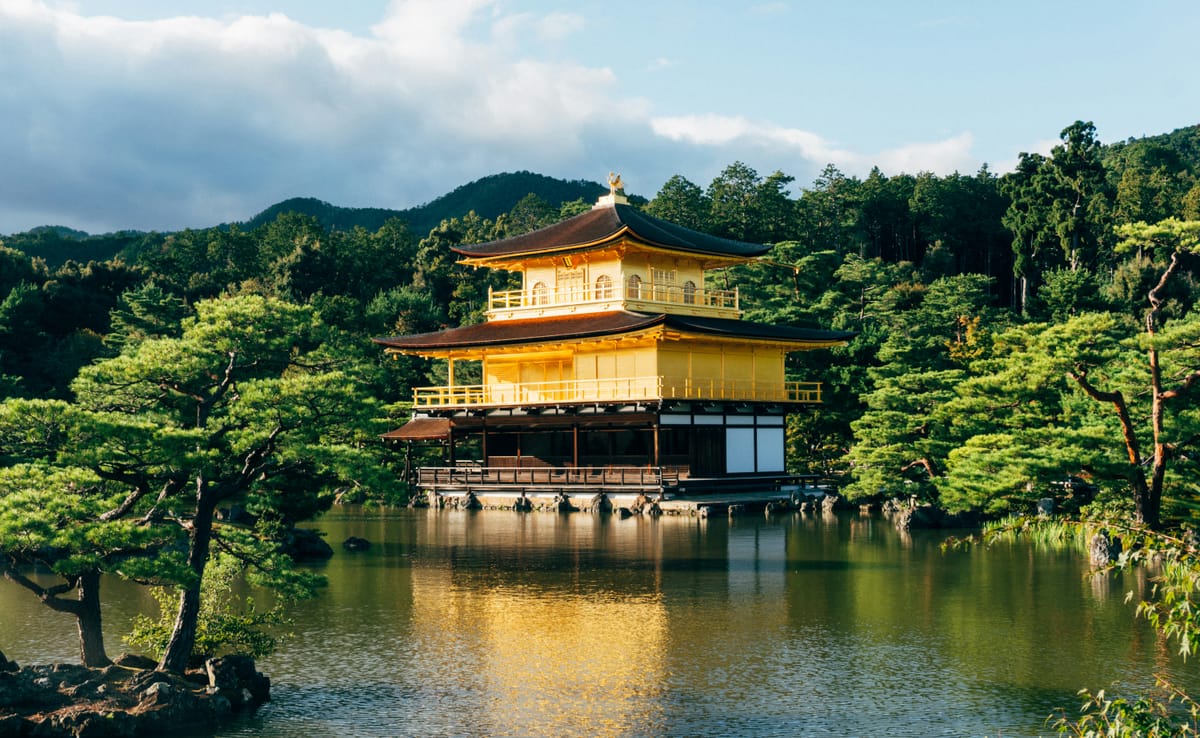
Kiyomizu-dera Temple
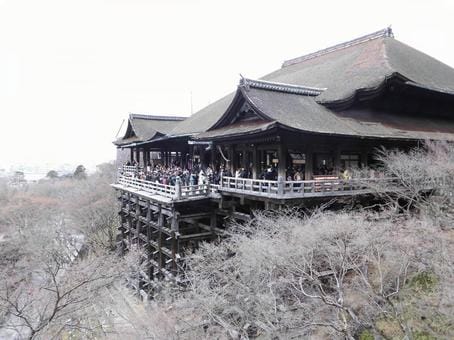
Kiyomizu-dera Temple is also an unmissable spot for winter in Kyoto. From the stage of Kiyomizu-dera Temple, built on a hillside, you can view the snow-covered Kyoto city, offering a truly spectacular view.
You can enjoy beautiful snow scenes at various points throughout the grounds, including the Nio-mon Gate and the three-storied pagoda. However, be very careful of slippery stone steps due to snow.
For winter sightseeing in Kyoto, don't forget to prepare warm clothing and non-slip shoes. Take this opportunity to experience the beauty of snow falling on the majestic appearance of Kiyomizu-dera Temple.
Access
・About a 25-minute walk along the approach road from Keihan Electric Railway "Gion-Shijo Station" or Hankyu Railway "Kyoto-Kawaramachi Station"
Website: https://www.kiyomizudera.or.jp/en/
If you are interested in Kiyomizu-dera Temple, check the article below! I summarized in more details and how I felt there.
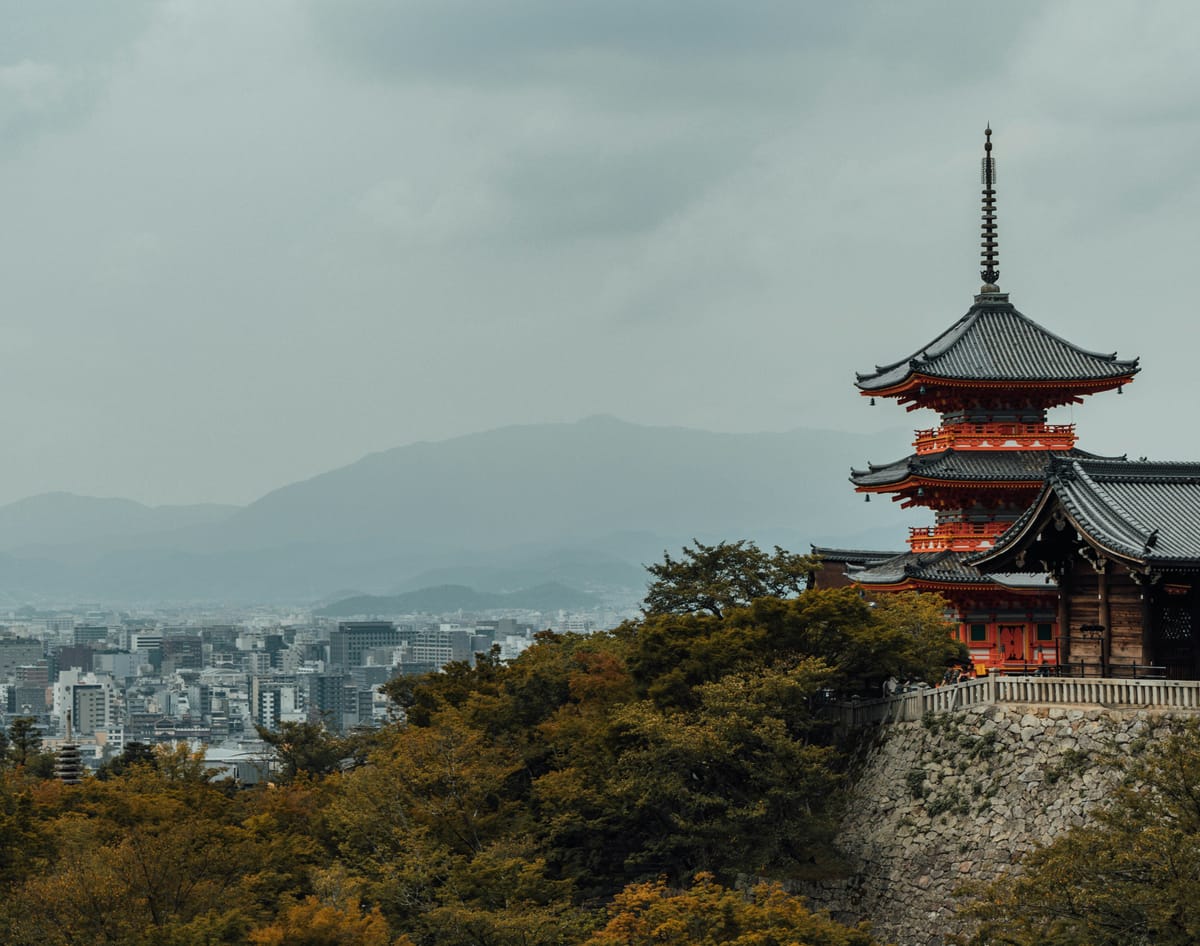
Are There Events in Kyoto's Winter?
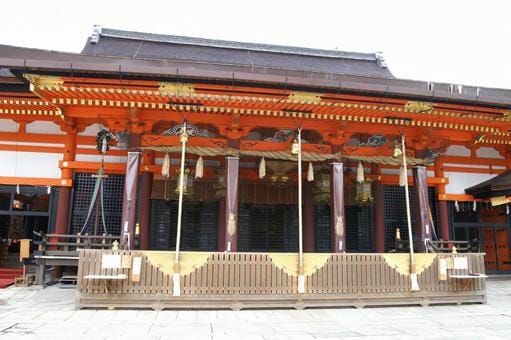
While Kyoto's winter has fewer large events compared to summer, hatsumode is not to be missed. Hatsumode is a traditional event where people visit shrines at the beginning of the new year to pray for happiness throughout the year.
Many visitors come to Kyoto's famous shrines during this time. Especially popular are Fushimi Inari Shrine and Yasaka Shrine. At Fushimi Inari Shrine, which attracts worshippers from all over the country, a spectacular view awaits after passing through the tunnel of thousands of red torii gates.
Yasaka Shrine, known as a deity for warding off misfortune, is also crowded with many people during this time. Not only can you enjoy the atmospheric scenery at any shrine, but you can also enjoy amazake and other treats from food stalls. Why not pray for happiness in the new year at a Kyoto shrine at the beginning of the year?
Winter Gourmet
When it comes to winter gourmet in Kyoto, I start craving hot pot dishes. Among them, what I'd like to recommend is yudofu, which I also introduced in the autumn section.
Yudofu is a staple Kyoto dish that warms you up from the core in the cold winter. It's a simple dish where tofu made with rich soy milk is enjoyed in a light-flavored broth, but the melting texture of the tofu and its gentle flavor are indescribably delicious.
You can't miss Kyoto's obanzai either. Obanzai refers to Kyoto's home-style cooking, characterized by dishes that use plenty of seasonal ingredients and are gentle on the body.
On the other hand, Kyo ryouri (Kyoto cuisine) is authentic cuisine that utilizes local ingredients, known not only for its taste but also for its delicate presentation that's beautiful to look at.
Winter in Kyoto offers an excellent opportunity to enjoy both obanzai and Kyo ryouri. The restaurants I introduce below are recommended for obanzai and Kyo ryouri, so please visit them.
Recommended Restaurant for Obanzai: Miyako Yasai Kamo
Source: Tabelog by Miyako Yasai Kamo
This is an all-you-can-eat obanzai restaurant that I often used during my student days. The attraction is that you can eat as much as you like of healthy obanzai made with completely pesticide-free or reduced pesticide fresh vegetables at reasonable prices.
I was always moved by the array of dishes that directly convey the deliciousness of vegetables and are gentle on the body. If you want to fully enjoy the taste of Kyoto vegetables, I think it's worth visiting here first.
Website: https://nasukamo.net/
Recommended Restaurant for Kyo Ryouri: Pontocho Fujita
Source: Tabelog by Ponotcho Fujita
I discovered this famous Kyo ryouri restaurant when a senior colleague from my part-time job took me there during my student days.
Its atmospheric presence in an alley of Pontocho is impressive. While the prices are on the higher side, the satisfaction of experiencing the essence of Kyo ryouri in both taste and atmosphere is something special that can't be found elsewhere.
I recommend it for special occasions like celebrations. Reservations can be made online, so foreign tourists can use it with peace of mind.
<Store Information>
Address: 179-2 Zaimokucho, Nakagyo Ward, Kyoto, 604-8017
Closed: Mondays, Tuesdays
Phone: 075-255-0500
Hours: 11:30 AM–2 PM, 5:30 PM–9:30 PM
Hours (Fridays): 5:30 PM–9:30 PM
Website: https://www.tablecheck.com/en/pontocho-fujita
Important Points for Winter in Kyoto
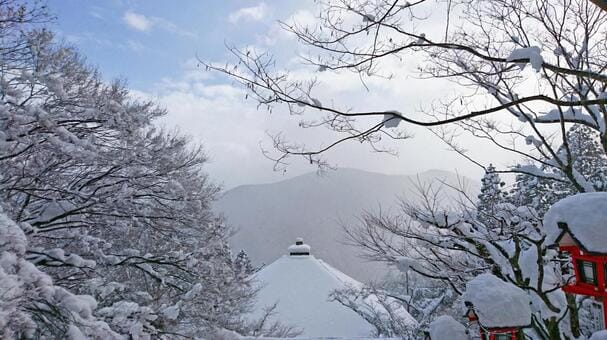
The characteristic of Kyoto's winter is that it's very cold. When sightseeing on foot, it's important to take proper measures against the cold. In particular, cold weather items like coats, sweaters, and scarves are essential.
Also, since it can snow in Kyoto, it's better to choose non-slip shoes. However, indoor spaces are often well-heated, so it's also important to dress in layers that can be easily put on and taken off. Take proper measures against the cold and enjoy Kyoto's winter comfortably.
Kyoto is a charming city that shows different expressions in each season. You can feel the beauty of nature in each moment - cherry blossoms in spring, festivals in summer, autumn leaves in fall, and snow scenes in winter.
Drawing from my experiences during my graduate school days in Kyoto, I've tried to convey in as much detail as possible how to enjoy each season in Kyoto.
Kyoto is full of attractions, from famous tourist spots to hidden gems. Not only can you enjoy historical buildings and beautiful nature, but you can also experience Japanese culture more deeply by participating in traditional events like the Gion Festival.
Also, not to be missed is the delicious gourmet food that can be enjoyed in each season, such as Kyo ryouri (Kyoto cuisine) and obanzai that make use of seasonal ingredients.
Of course, it's also important to prepare for comfortable travel in Kyoto, such as choosing appropriate clothing and taking measures against heat and cold.
I hope you'll do thorough research and fully enjoy Kyoto. I sincerely hope that you'll have a wonderful time in Kyoto that will remain in your memories for a lifetime!


